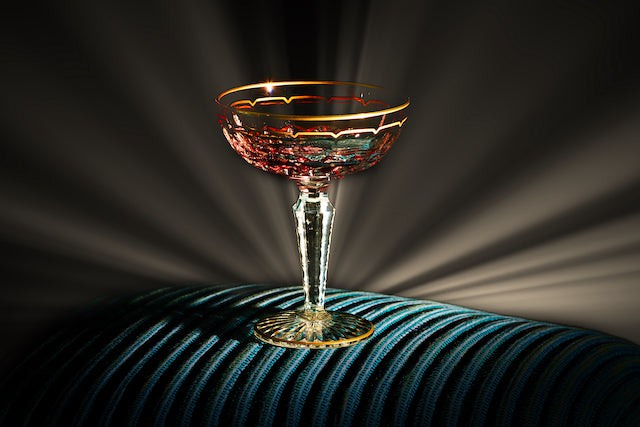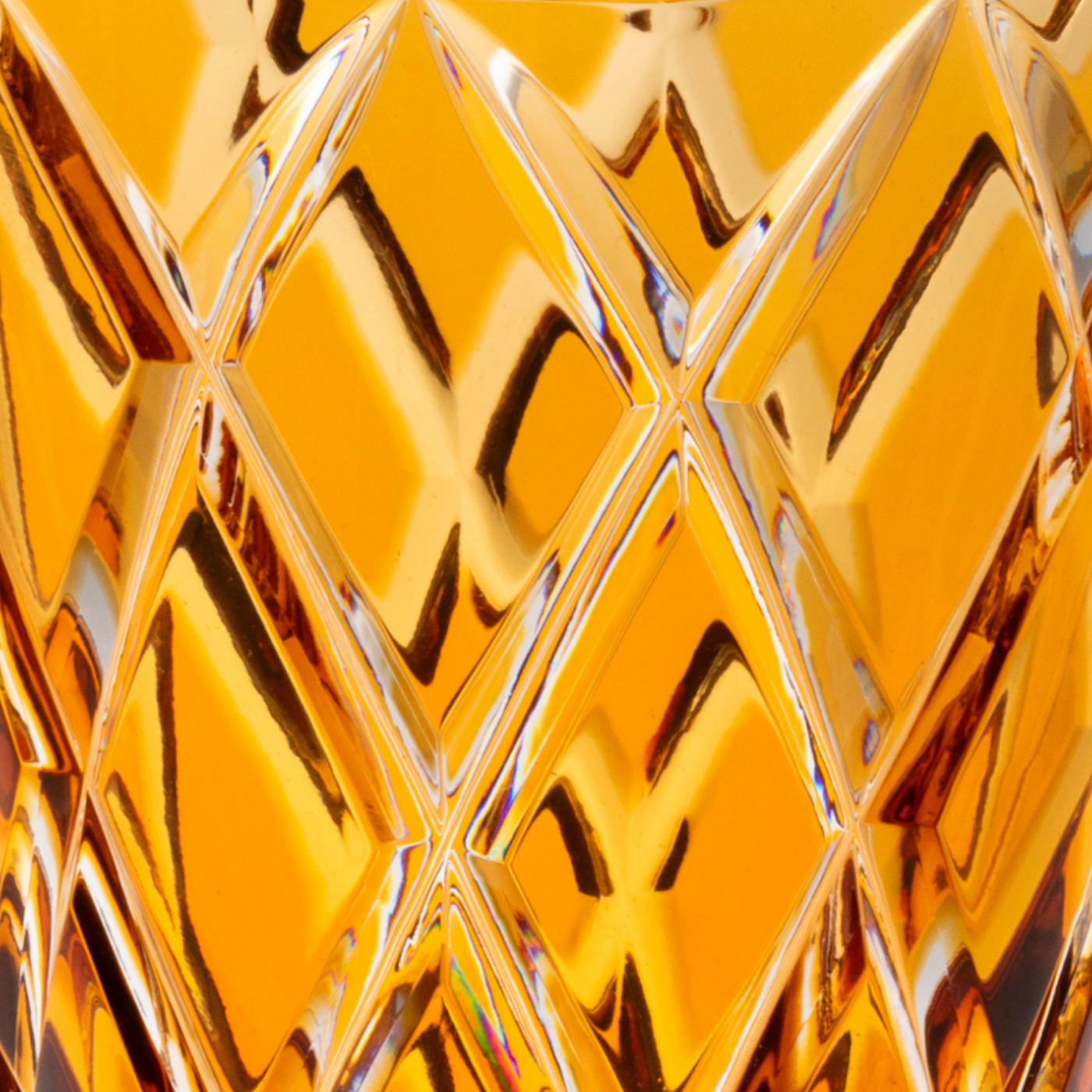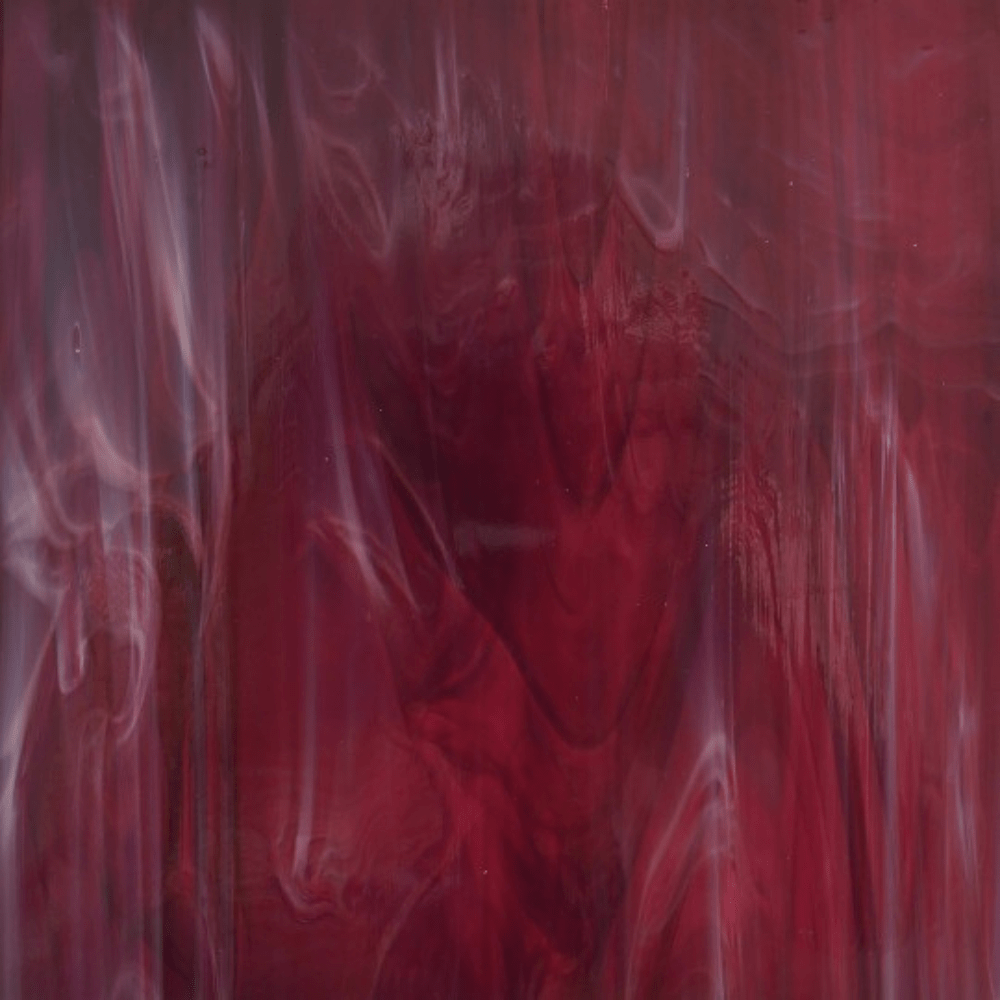
AMETHYST
Amethyst is a particularly natural shade of violet, rich in pigment. As violet is the perfect blend of blue and red, amethyst benefits not only from its own values, but also those of violet, and therefore of blue and red.
HISTORY & ATTRIBUTES
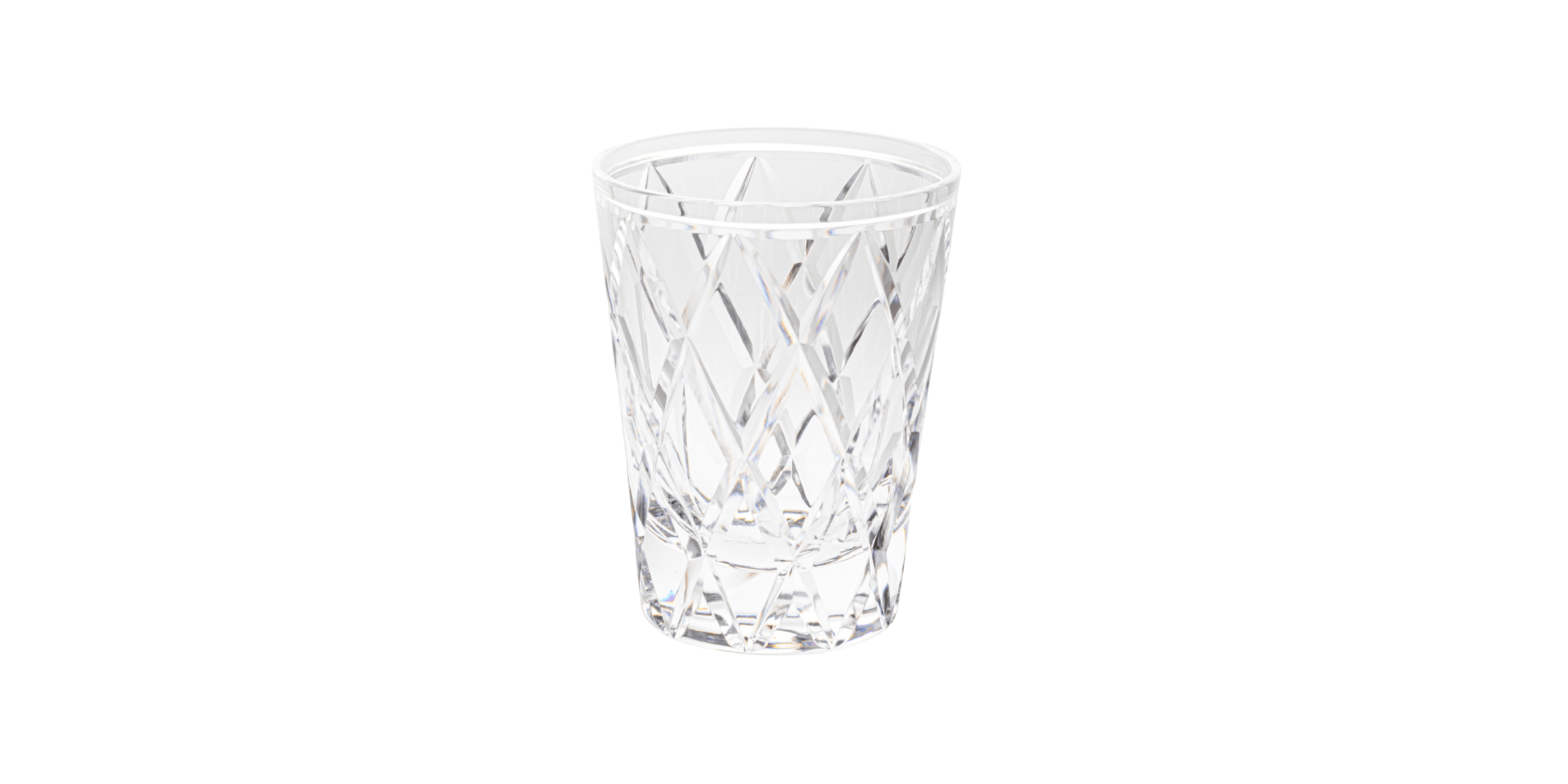
Before
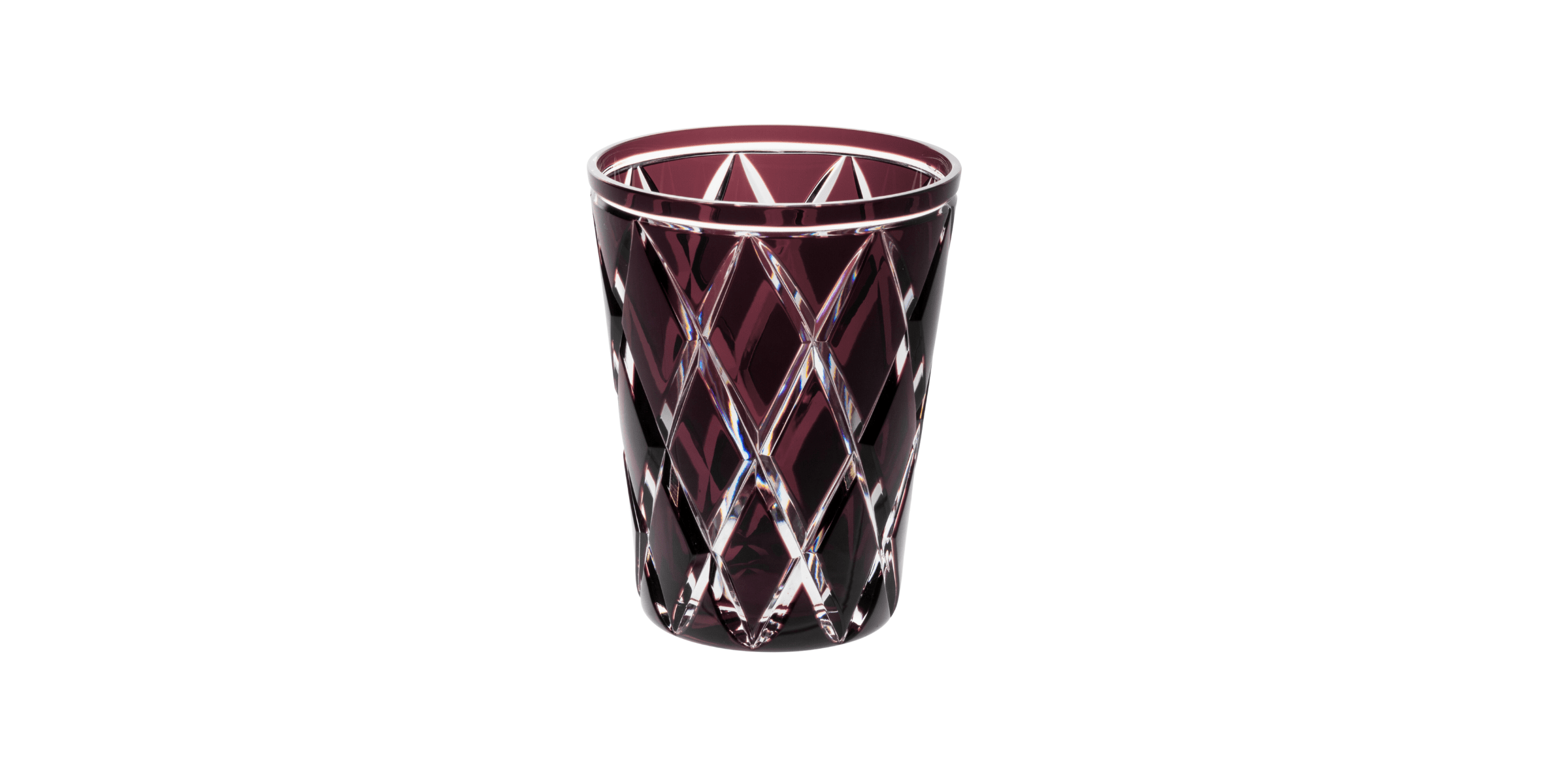
After
Amethyst is a colour named after the stone of the same name, a violet quartz gemstone. The stone is generally known for its protective properties, and as bringing clarity of mind and strength to the wearer. Often found in the geodes that make up cooled lava, amethysts range in colour from a pale lilac to a deep reddish violet. At the Cristallerie de Montbronn, our Amethyst colour offers a rich dark violet. Amethyst gets its colours from the presence of iron in the stone, as well as from natural radiation below the Earth's surface.
The word "amethyst" is derived from the Greek word amethystos meaning "not drunk" / "remedy against drunkenness". The ancient Greeks believed that a person could drink all night and remain sober if they wore an amethyst. Because of its wine-like colour, Greek mythology associated amethyst with Dionysus, the god of wine.
The ancient Egyptians used amethysts in amulets as protection against evil, while Renaissance Europeans believed it calmed passionate lovers.
Catherine the Great of Russia had a particular liking for this precious stone, which led her to collect a multitude of amethyst jewels.
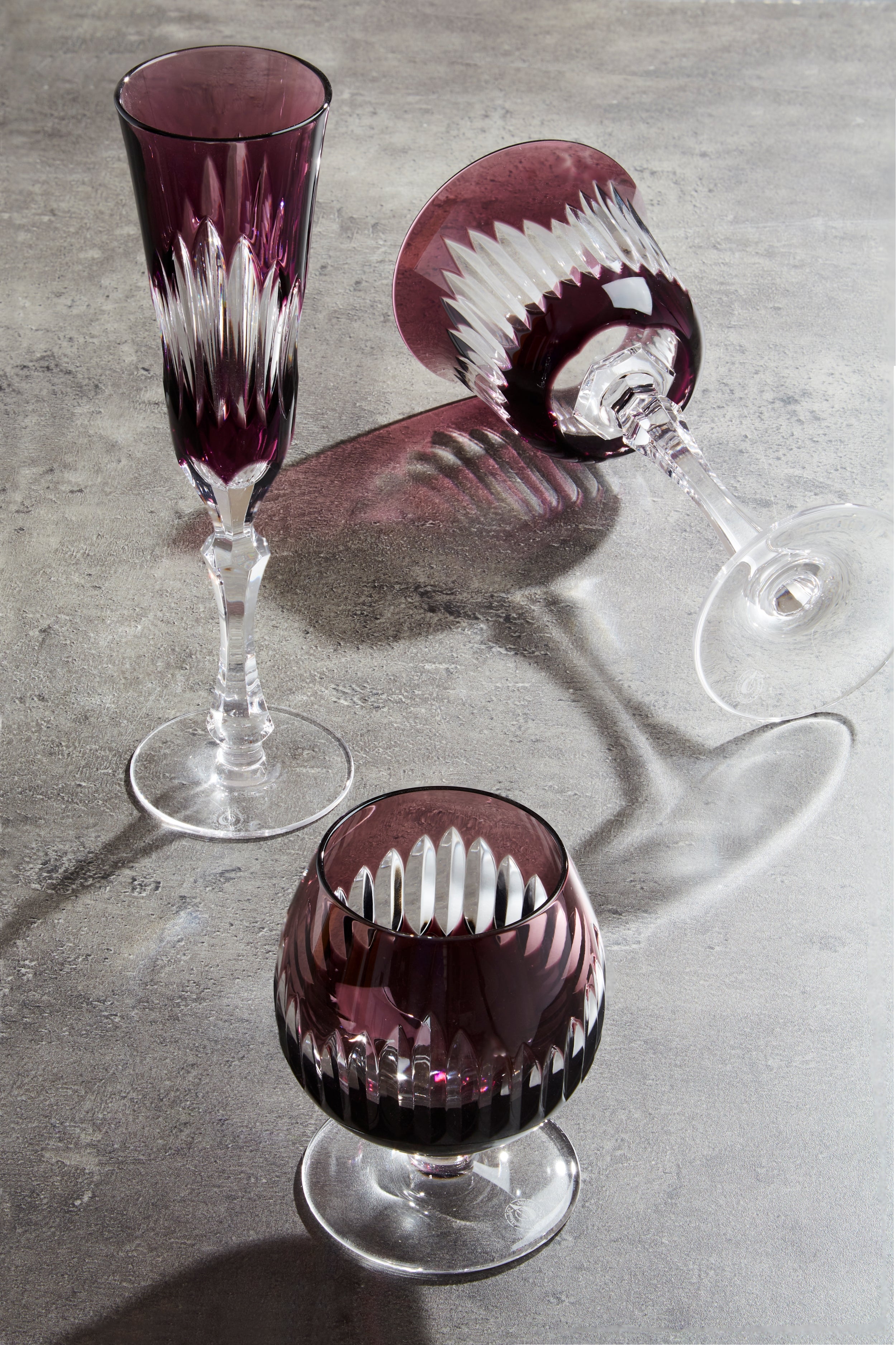
How & why should I use it?
Amethyst is said to bring strength and wisdom to the wearer, a belief that actually applies very well to the colour, which brings calm, clarity of mind, vigour and self-confidence through its warm and cool undertones. Camillo Leonardi, astronomer and astrologer, wrote that amethyst and its colour accelerate intelligence and rid you of bad thoughts.
In art and design, amethyst, and violet in general, are often used to bring richness to a space, violet being a very noble colour both in its history and in its saturation. It symbolises regularity, balance and luxury, and can inspire creativity and spirituality. Lighter shades are known for their calming qualities, while darker shades like ours are known for their elegance.


